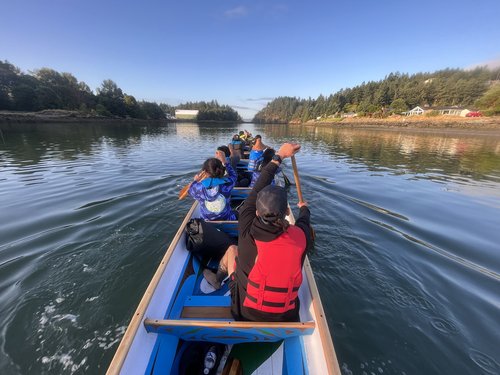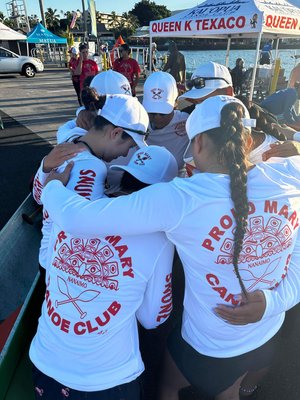Trust at the heart of Indigenous photo project partnership
When Indigenous groups work with non-Indigenous organizations, trust is everything. Any partnership has to be mutually beneficial and founded on respect and values.
That was key when the National Reconciliation Program at Save the Children Canada supported efforts by the Kw’umut Lelum Foundation to shine a light on young people from the Coast Salish Nations.
The result was an initiative called PhotoVoice, which explored the cultural identity and wellbeing of Indigenous youth taking part in the annual canoe journeys on the Northwest Coast. During the long voyage, they took pictures which are now on show at an exhibition on Vancouver Island.
“We’re small but we’re also one of only four Indigenous-led foundations in Canada,” said Sharon Hobenshield, Executive Director of the Kw’umut Lelum Foundation (KLF). “Bringing the beautiful voices of the youth to a larger population is so valuable.”
The trust-based partnership evolved when Save the Children Canada was seeking to support an Indigenous initiative.
“It was really important to do our research – to find where we could support child rights and Indigenous rights,” said Yasemin Erdogan, Partnership Manager of the National Reconciliation Program (NRP), which focuses on reconciliation through a child-centred approach.
“We looked at who is already doing incredible work that aligns with our mission and identified the Kw’umut Lelum Foundation. Its focus on Indigenous children and collaborations meant they were a naturally fitting partner for the NRP.”

The foundation is led and stewarded by nine Coast Salish Nations – Halalt, Lyackson, Málexeł, Penelakut, Qualicum, Snaw-naw-as, Snuneymuxw, Stz’uminus, and Ts’uubaa-asatx. These nations in British Columbia and Washington state have a shared purpose and vision for children and communities.
Sharon said: “We have the ability to have a strong impact because we are so grounded in the community and can be more flexible. We really try to incorporate and highlight the culture as the foundation for everything we do.
“The partnership with Save the Children Canada can help us with that. As a small charity, trust addresses the power imbalances. It wasn’t about me coming cap in hand, saying please support us. It was people with stature and capacity at Save the Children coming to us and saying this is an opportunity that could work out. That was huge for us.”
The partnership began in 2022 and identified the PhotoVoice project as the ideal initial project to be supported.
More than 20 members of Coast Salish Nations – aged from nine to early twenties – set off in four canoes last summer during the annual Tribal Journeys. They were embarking not just on a physical journey to meet up with thousands of other Indigenous peoples. They were also exploring their cultural identity.
Over the next few weeks, these “canoe families” chronicled their experiences and emotions by taking pictures on their phones.
Rose Manson, a 16-year-old member of the Munu canoe family, said: “PhotoVoice was an opportunity to capture the emotional moments and to show how cultural events can impact peoples’ lives. The most positive thing about participating in Tribal Journey is that people share a sense of pride and are happy.”
The four canoe families who took part in PhotoVoice were among about 130 canoes and thousands of people who participated in last year’s Tribal Journeys. They paddled from various parts of the Canadian and US Pacific Northwest, joining up with other communities along the way before the final week-long gathering at Muckleshoot in Washington state.

Sharon has participated in three Tribal Journeys, during which she “witnessed the transformation of young people in that experience”. She said: “That’s what I wanted to capture. I thought PhotoVoice would be a great way to see through young people’s eyes.”
“The youth picked the photos for the exhibition. The themes that emerged – celebrating culture, commitment and consistency, opportunities to share and mentor, and working together – have become our pathways for the future.”
Yasemin said: “PhotoVoice is a great example of strength-based, creative, youth-centred, and Indigenous-led programming and initiatives that can contribute to health and wellness. We were incredibly grateful and excited to be able to provide support.”
The NRP and KLF are discussing potential future projects after the success of PhotoVoice. An exhibition of the PhotoVoice pictures is being held in Vancouver Island Regional Library at Nanaimo Harbourfront from May 23 to June 28.


